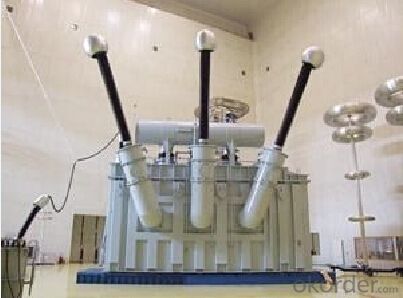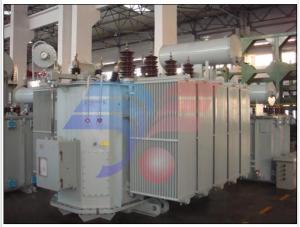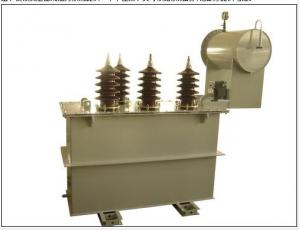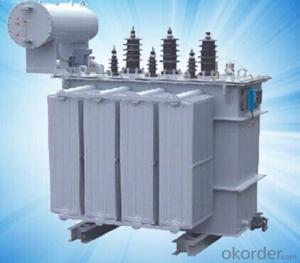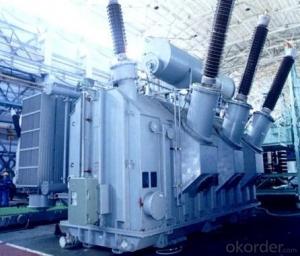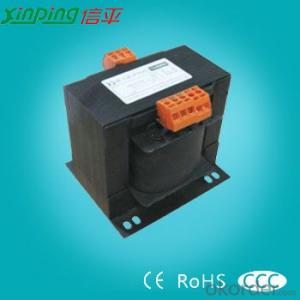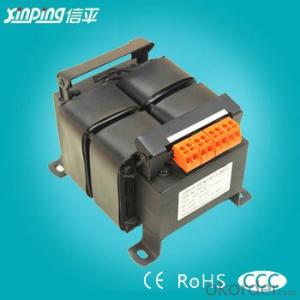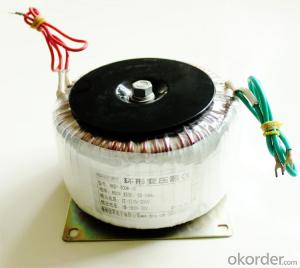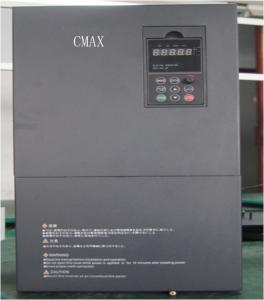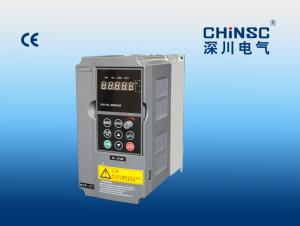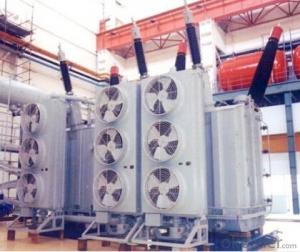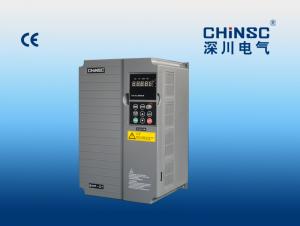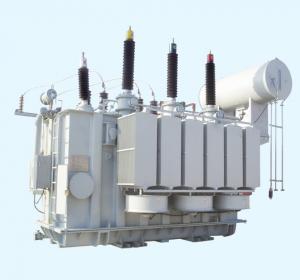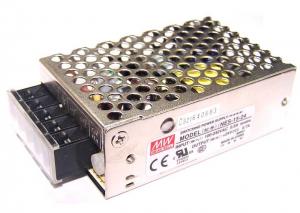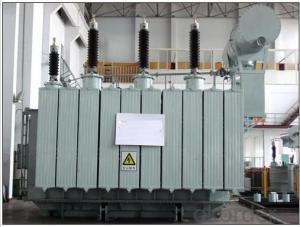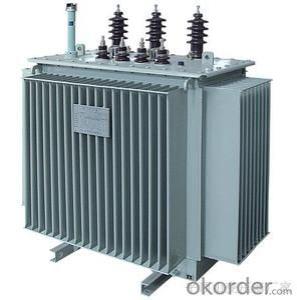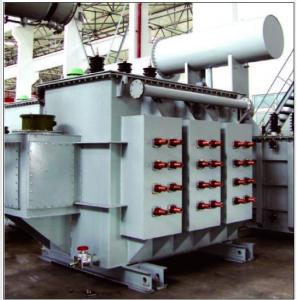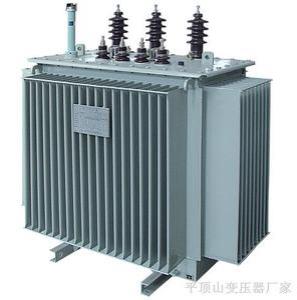1140MVA/500kV Three-phase integrated transformer
- Loading Port:
- Tianjin
- Payment Terms:
- TT OR LC
- Min Order Qty:
- 1 pc
- Supply Capability:
- 1 pc/month
OKorder Service Pledge
OKorder Financial Service
You Might Also Like
Quick Details
| Place of Origin: | HeBei | Brand Name: | CNBM | Model Number: |
|
| Usage: | Power | Phase: | Three | Coil Structure: | Toroidal |
| Coil Number: | 3 Winding | Capacity: | Rated Voltage: | 1140MVA/500kV | |
| Connection Symbol: | YNd11 Dyn11 YNyn0d11 | Tank: | Cover type or Bell type | OLTC: | MR or ABB or SMS |
Packaging & Delivery
| Packaging Detail: | Mainbody --naked Disassembled parts -- crate |
| Delivery Detail: | 3 months |
Specifications
1. CESI certificate
2. High short-circuit withstand
3. Low loss, PD and noise
4. CTQC certificate
5. No leakage
Description
The application of 1140MVA/500kV Three-phase integrated transformer can significantly improve the economy of the UHV substation, and matches well with the transmission capacity of UHV lines, which has wide prospect of application. Because of its large capacity and large volume, the whole transportation weight with nitrogen is about 470-490 tons, and due to the restricted transport conditions, the transportation becomes the critical issue for application of the 1140MVA/500kV Three-phase integrated transformer. In order to make the products applicable to any UHV substation in our country, the state grid of corporation of China set the "A study of easy-transport large capacity UHV Transformer” as a key scientific research projects, and entrusted BTW to carry out the research.
During the process of research and development, BTW adopted the advanced design technology and modular design, the transformer can be transported disassembly and with advantages of compact core and winding body, less transportation weight and low transportation cost, effectively solves the need of UHV construction in the transportation restricted areas. By using the most advanced 3D magnetic field calculation software, BTW performed detailed analysis and calculation for the magnetic flux leakage and eddy current loss of the transformer coil, iron core and oil tank steel structures. Besides, by using of the advanced electric field calculation software, BTW performed detailed analysis and calculation of main longitudinal insulation, and mastered the arrangement of the main longitudinal insulation of large capacity UHV transformer and the control of distribution of winding magnetic flux leakage. All of which make the products with low loss, low noise, small volume, strong anti short circuit ability, no local overheating and other significant advantages, and guarantee the long-term safe and stable operation.
The world's first on-site assembled large capacity UHV Transformer’s right at the first time once again filled the gap in the field of UHV transformer research after Chinese transformer industry overcame the difficulty of integral transport of the 1140MVA/500kV Three-phase integrated transformer, which marks BTW has fully occupied the world transformer industry technical peak. The successful development of the product filled the gaps in the domestic technology and met the urgent need of UHV construction application in our country, greatly improved the technical level and manufacturing ability of BTW in terms of UHV Transformer products.
- Q: hello Im trying to ride my jet ski but the battery keeps dieing I tested my rectifier and it is getting no current at all but my stator is kicking out power so could I use a transformer to change the current from AC to DC or 20v AC to 13.5 volts DC
- No. Transformers and rectifiers are completely different things. A transformer converts high voltage AC current to low voltage AC and vice versa. A rectifier converts AC current to DC at the same voltage. In your case, you need 4 new rectifiers to convert 20V AC from the alternator to 20V DC and a voltage regulator to fix the output voltage to around 13.5V DC
- Q: What is the principle of the conversion of the transformer? How to restore the secondary side to the primary side?
- Understand P1 = P2 (no loss here). To know the return of the.
- Q: 2500KVA transformer bearing current how much calculation
- Did not give the voltage data to transformer primary and secondary side rated voltage 10KV / 0.4KV as an example: Primary side rated current: I = P / 1.732 / U = 2500 / 1.732 / 10 ≈ 144 (A) Secondary side rated current: I = P / 1.732 / U = 2500 / 1.732 / 0.4 ≈ 3609 (A)
- Q: HELP!! My boyfriend wants to see transformers and he told me I had to study up first lol! He wants me to know who all of the characters are because apparantly its from a comic or cartoon or something? I dunno but can anyone tell me anything about the TRANSFORMERS? I need to know characters and storyline etc. basically just anything u knowThanks lol.
- well, transformers is basically about two groups of opposing robots in a war againts each other. one good, the other bad. they live in a planet called cybertron and apparently, their planet is on the verge of dying because of the said war. their way of actually saving their planet is to search for a cube or something (i'm not entirely sure where the cubes come from) which they can use to revive their planet or take over another planet and make it their own. a cube is detected to be on earth and so they come here to get it and hence the story you should watch the movie, i've already seen it and it was really really great
- Q: The core part of the transformer is composed of sub-and sub-components, which are generally divided into two transformers. Urgent, quick answer What is the core part of the "what" and "what" sub-composition ah? The "What" son, this "what" is to fill you ah.
- The core part of the transformer is composed of (primary coil) and (secondary coil), generally divided into two types of step-up transformer and step-down transformer. (In fact, there is not a step up and not buck the isolation transformer) Did not hear the transformer "what son".
- Q: I am learning about transformers and one of the items to calculate is the impedance. I need to calculate regular 60 Hz Core and Coil Shell Type Transformers Al wire in secundary, Cu Wire primary and use Epoxy paper for insulation.
- It's pretty difficult to calculate the impedances (there's more than one) entirely from the transformer's design data. It's easier and more usual to decide on an equivalent circuit (there are plenty available depending on how well you want to model the transformer) and then to determine the parameters by a mix of calculation and measurement. A pretty basic equivalent circuit which refers all impedances to the primary side, has the primary terminals connected first by Xm and Rc in parallel (the magnetising reactance and core loss resistance) and then by a third parallel branch containg a series connection of leakage reactance Xl, winding resistance Rw and an ideal transformer of turns ratio Np/Ns. Xm is best obtained from an open circuit test but could be calculated as the inductance of the primary winding. For the latter you'd need to know core dimensions, number of winding turns and the magnetising characteristic of the core iron. If you have conductor sizes and conductivities you can calculate the winding resistance Rw, referring the secondary part to the primary by multiplying it by (Np/Ns)?. You can deduce Rc from the losses measured on open circuit at nominal voltage and Rw from dc resistance measurements on the windings. If you know the specific hysteresis and eddy current losses of the core material, you can also have a good stab at calculating Rc. The leakage reactance is quite difficult to calculate from first principles - even designers usually resort to some empirical factors. Basically it's determined from the short circiut test which is at nominal secondary current. The ratio of primary volts to secondary surrent (referred of course) on secondary short circuit will get you close to Xl - you can adjust for Rw which can be determined from the losses on short circuit (core losses are absent here!) or by the two methods indicated above. It's normally Xl that's referred to as the transformer reactance and together with Rc and Rw, the impedance.
- Q: I really want to know what a transformer is, how it works, and why it works. I really want an answer that goes down the the atomic scale. I really want analogies. And please don't copy and paste stuff from websites. Please don't worry about getting second comment. The most scientific and well explained answer gets best answer.
- I know this isn't what you asked for, but it gives a much better answer than I'm willing to type.
- Q: i want to know the actual lyrics for the Transformers theme that was re-covered by Mute Math. i heard that they changed some of the lyrics but i would like to know the exact changes, thanks.
- i hope this helps - Something evil's watching over you Comin' from the sky above And there's nothing you can do Prepare to strike There'll be no place to run When your caught within the grip Of the evil Unicron Transformers More than meets the eye Transformers Robots in Disguise Strong enough to break the bravest heart So we have to pull together We can't stay worlds apart To stand divided we will surely fall Until our darkest hour When the light will save us all Transformers More than meets the eye Transformers Robots in Disguise Transformers Autobots wage their Battle To destroy the evil forces Of the Decepticons It's judgment day and now we've made our stand And now the powers of darkness Have been driven from our land The Battle's over but the war has just begun And this way it will remain til the day when all are one Transformers Transformers Transformers Transformers More than meets the eye
- Q: I want to make a simple flyback transformer driver. I have a flyback transformer of samsung CRT monitor. Can anyone give me a complete design of flyback transformer's pin. What are the required components. Please give answer in detail.
- These transformers are designed for TV or monitor line frequency. They use a square wave drive at the line frequency (15625Hz or more for a monitor) The on time is around half the duration of a cycle or more, so 32us for 15625Hz. The driver is a switch, it is on for this time. The current builds as a sawtooth (ramping) current in the inductance of the winding during this time. The design of the driver switch needs to take into account ratings are in the safe operating area (SOA). This means the rate of change of voltage and current, as well as the instantaneous V * I must always be within ratings. It means that the switch should be rapid, so there is minimal time spent in the transition off to on and on to off. There usually needs to be a snubber network to control voltages across the transistor. The pin connections of the transformer? The links below show how to do it basically. It also shows how to check out and identify the windings you need, and also to verify them, using the schematic of the original device if possible. Tracing wires on the circuit board can help too, to identify the primary. You only need to identify 4 pins usually. There are some safety issues here. Some have small internal capacitors that store energy. This can give an unpleasant shock. It could be around 0.2 joules or more because of the high voltage. I am not sure what sort of a hazard this might be, but I wouldn't take it too lightly or use it to shock yourself or others. I assume you are using a 12V DC supply @ a few amps current to power this.
- Q: Every yellow vehicle we pass on the road is BUMBLEBEE!!! and big trucks are opinus PWIME! And, he is constantly singing Twansfomahs, more dan meets dah eye! LOL So, I wanted to find him something for Easter that was transformers related, but as it's Easter, and NOT Christmas, I don't want to spend a lot of money. Suggestions?
- Coloring books or stickers, the bookstores have lots of transformers books.
Send your message to us
1140MVA/500kV Three-phase integrated transformer
- Loading Port:
- Tianjin
- Payment Terms:
- TT OR LC
- Min Order Qty:
- 1 pc
- Supply Capability:
- 1 pc/month
OKorder Service Pledge
OKorder Financial Service
Similar products
Hot products
Hot Searches
Related keywords

